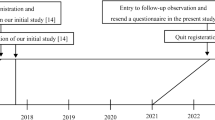Abstract
Chronic pain and neural irritation after breast surgery and radiation are still relevant sequelae of the treatment. Pain quantification and localization in patient groups are difficult to standardize. In order to quantify and localize pain in a group of breast cancer patients, a Java-based program was developed to visualize the frequency of pain in “pain maps.” A questionnaire with structured questions on the perception of pain included pictograms of a body to mark possible pain areas. A group of 343 breast cancer survivors completed the questionnaires. The image information was digitalized and processed using a Java applet. Gray-scale summation pictures with numbers from “0,” indicating black (100% pain), to “255,” indicating white (0% pain), were generated. The visualization of pain by creating pain maps revealed the location of pain in breast cancer survivors on pictograms of the body. Analyzing the total number of pixels, in which pain was stated, made it possible to compare pain areas in several subgroups, showing that patients after mastectomy versus breast-conserving therapy (3,011 vs. 2,224 pixels), and patients with lymphedema versus patients without lymphedema (3,010 vs. 2,239 pixels), have larger pain areas. This study presents a method of visualizing pain areas and assigning them to a pictogram of the body in a sample of breast cancer patients. The method is easy to use and could help generate pain maps in several types of disease.





Similar content being viewed by others
References
Carpenter JS, Andrykowski MA, Sloan P et al (1998) Postmastectomy/postlumpectomy pain in breast cancer survivors. J Clin Epidemiol 51:1285–1292
Macdonald L, Bruce J, Scott NW et al (2005) Long-term follow-up of breast cancer survivors with post-mastectomy pain syndrome. Br J Cancer 92:225–230
Stevens PE, Dibble SL, Miaskowski C (1995) Prevalence, characteristics, and impact of postmastectomy pain syndrome: an investigation of women’s experiences. Pain 61:61–68
Smith WC, Bourne D, Squair J et al (1999) A retrospective cohort study of post mastectomy pain syndrome. Pain 83:91–95
Tasmuth T, von Smitten K, Hietanen P et al (1995) Pain and other symptoms after different treatment modalities of breast cancer. Ann Oncol 6:453–459
Ferguson A (2007) Discovery of neuropathic pain following breast surgery. Br J Nurs 16:102
Kehlet H, Jensen TS, Woolf CJ (2006) Persistent postsurgical pain: risk factors and prevention. Lancet 367:1618–1625
Tatrow K, Montgomery GH (2006) Cognitive behavioral therapy techniques for distress and pain in breast cancer patients: a meta-analysis. J Behav Med 29:17–27
Turp JC, Kowalski CJ, O’Leary N et al (1998) Pain maps from facial pain patients indicate a broad pain geography. J Dent Res 77:1465–1472
Bani HA, Fasching PA, Lux MM et al (2007) Lymphedema in breast cancer survivors: assessment and information provision in a specialized breast unit. Patient Educ Couns 66:311–318
Bani MR, Beckmann K, Engel J et al (2008) Correlates of the desire for improved cosmetic results after breast-conserving therapy and mastectomy in breast cancer patients. Breast 17(6):640–645
Hamner JB, Fleming MD (2007) Lymphedema therapy reduces the volume of edema and pain in patients with breast cancer. Ann Surg Oncol 14:1904–1908
Acknowledgments
The authors are grateful to Gassan Bani, MD, who helped substantially in the data management process for this study. Peter A. Fasching is funded by the Dr. Mildred Scheel Stiftung, Deutsche Krebshilfe e.V.
Author information
Authors and Affiliations
Corresponding author
Rights and permissions
About this article
Cite this article
Jud, S.M., Fasching, P.A., Maihöfner, C. et al. Pain perception and detailed visual pain mapping in breast cancer survivors. Breast Cancer Res Treat 119, 105–110 (2010). https://doi.org/10.1007/s10549-009-0485-z
Received:
Accepted:
Published:
Issue Date:
DOI: https://doi.org/10.1007/s10549-009-0485-z




